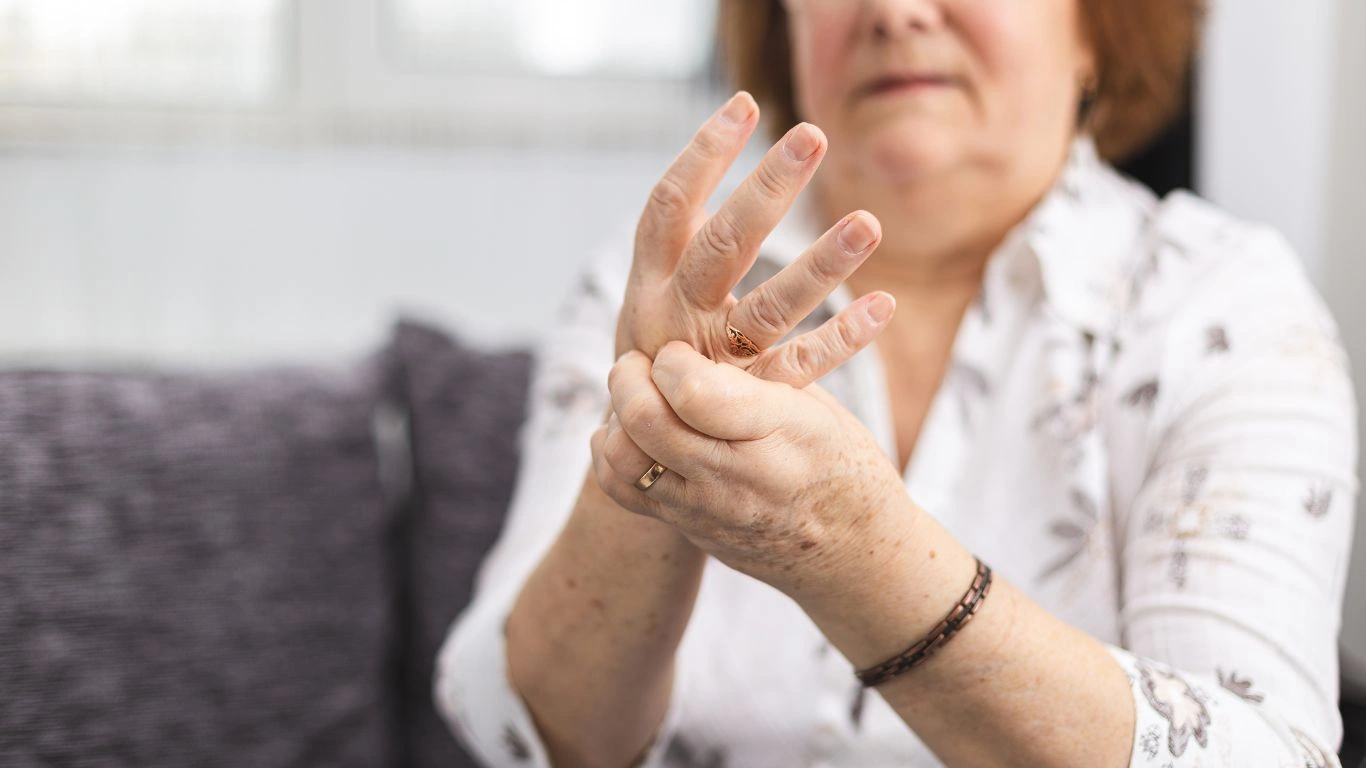How to Stay Active Safely with Rheumatoid Arthritis: Tips and Tricks for Pain Relief
Let’s be real — staying active when you’re dealing with rheumatoid arthritis (RA) isn’t always a walk in the park. I’ve seen it firsthand with countless patients in my practice, and I’ve had more than a few heart-to-hearts with folks who feel like moving at all is a major challenge. But here’s the deal: rheumatoid arthritis and how to stay active safely go hand-in-hand when it comes to managing the condition long-term. You don’t have to be running marathons or doing backflips to benefit. Small, smart moves — tailored to your body’s needs — can make a big difference in how you feel day to day.
Why Movement Matters More Than You Think

One thing I always tell my patients is this: movement is medicine. Seriously. Staying active helps maintain joint function, reduces stiffness, and boosts overall mood. I know the word “exercise” can trigger a mix of dread and eye-rolls, but when it’s customized to your energy level and joint health, it becomes an empowering tool, not a punishment.
I once worked with a lovely patient who had basically written off exercise entirely because she thought it had to hurt to count. Spoiler alert — we proved that wrong together. We swapped out her old high-impact routine for a few low-impact, joint-friendly activities, and it completely changed her outlook and mobility.
How RA Affects the Way You Move
RA is an autoimmune condition where your body’s immune system mistakenly attacks the lining of your joints. What that means in real life? Pain, swelling, and that all-too-familiar morning stiffness that can make it feel like your body is stuck in slow motion.
Now, this doesn’t mean you can’t move — it just means we’ve gotta be smarter about how you do it. Think less “no pain, no gain” and more “gentle persistence pays off.”
- Inflamed joints need support, not strain.
- Fatigue needs pacing, not pushing.
- Stiffness needs motion, not more rest.
Finding the Right Type of Activity for RA

One of the best things you can do is find activities that fit your current energy level and joint health. I always say — your RA journey is uniquely yours. There’s no one-size-fits-all here, but these types of movement tend to be winners for most:
- Swimming and Water Aerobics: Water supports your body weight, so your joints get a break while you move. Plus, it feels amazing — like a little spa day for your joints.
- Gentle Yoga or Tai Chi: These focus on flexibility, balance, and breath. And hey, the calming mental effects are a bonus. I’ve seen patients go from skeptical to serene within just a few sessions.
- Walking (yes, plain ol’ walking): It’s low impact and super accessible. The key is pacing yourself and using supportive shoes. Think comfy, not cute.
- Strength Training (lightweight or resistance bands): Building muscle around your joints helps stabilize and protect them — and no, you don’t need a gym membership or fancy equipment.
Timing and Pacing: The Unsung Heroes
Here’s the golden nugget I’ve learned over years of treating RA: Consistency beats intensity every single time. On days when fatigue is fierce, even a few minutes of stretching or walking around your house counts. The trick is listening to your body without giving up on movement altogether.
I tell my patients to treat their energy like a bank account. If you overdraw it with a high-energy workout, you’ll pay the price in flares and fatigue. But if you pace yourself, you can actually gain strength and feel better over time. It’s all about knowing your limits and respecting them.
Working with Your Rheumatology Team

If there’s one thing I wish more people knew, it’s this: you’re not in this alone. Collaborating with your healthcare team — including your rheumatologist, nurse practitioner (hey, that’s me!), physical therapist, or even an occupational therapist — can make all the difference. We can help you tailor a plan that suits your specific RA symptoms, medication regimen, and life schedule.
And yes, we get it. I’ve had so many patients walk in thinking they were going to be lectured, but my approach is all about collaboration. You know your body best — I’m just here to help you interpret what it’s telling you and plan accordingly.
Adapting Activities for Flare Days

Now let’s talk about flare days — you know, those mornings where your joints feel like they’re rebelling against everything? Yeah, those. This is where most people start to wonder if they should just scrap all movement until the pain passes. But here’s the thing I remind my patients of all the time: staying completely still for too long can actually make things worse.
That said, this is *not* the time for a long walk or strength training. On flare days, it’s about shifting gears and doing the bare minimum your body needs to avoid seizing up completely. I usually recommend gentle range-of-motion stretches, maybe even while sitting in bed or in a warm bath. Think slow shoulder rolls, ankle circles, neck stretches — nothing fancy, but it helps keep blood flowing and muscles from tightening up.
And pro tip from my own experience working with chronic RA patients: heat therapy and movement go beautifully together. Try using a heating pad or warm shower before your stretches to loosen things up. It’s like prepping the joints for a little movement snack.
Don’t Underestimate Restorative Practices
One thing that often gets overlooked in the “stay active” conversation is how valuable *restorative* practices are. I’ve had patients think that if they’re not sweating or doing something high-energy, it doesn’t count. Let me tell you — the nervous system loves a good reset.
- Deep breathing exercises to help calm inflammation-related stress.
- Guided meditation or yoga nidra for pain perception and sleep quality.
- Leg elevation and lymphatic massage to reduce swelling post-activity.
Sometimes it’s these quiet, gentle movements that have the most profound impact, especially during the rougher days.
Choosing the Right Gear and Support

If I had a nickel for every patient who felt defeated just because they didn’t have the “right” gear… Well, let’s just say I’d have enough for a very cozy, heated therapy spa setup.
The good news is you don’t need to spend a fortune, but a few well-chosen tools can really change the game. Here’s what I often suggest to my RA folks:
- Supportive footwear: This is huge. Arch support and cushioning can take the load off painful joints. It’s not about fashion — it’s about function.
- Compression gloves or braces: These can offer stability, especially during activities like light lifting or gardening.
- Yoga blocks, straps, or chairs: Modify yoga or stretching sessions to make them more accessible. You don’t need to be a yogi to benefit.
- Walking aids (canes, trekking poles): No shame in support! I always tell folks, using tools is a sign of wisdom, not weakness.
Honestly, just investing in a few of these can extend your activity time and reduce post-exercise discomfort. It’s about working with your body, not against it.
Staying Motivated Without Burning Out
One of the biggest emotional roadblocks I see with RA patients is the “all or nothing” mindset. Trust me, I get it. Motivation comes in waves — and sometimes it feels like it left the building for good. That’s why I encourage people to build routines that flex with your life, instead of rigid ones that feel like a chore.
Here are a few things that have helped real patients (and frankly, me too when I’m dealing with burnout):
- Set micro-goals: Instead of saying “I’m going to work out 3 times this week,” try “I’ll stretch during one commercial break tonight.” It counts. It builds momentum.
- Find an accountability buddy: Whether it’s a partner, a friend, or even a community group — shared goals keep you going.
- Celebrate the small wins: You walked to the mailbox without pain today? That’s progress. Acknowledge it.
Listening to Your Body’s Signals

Let’s talk real talk for a second: no blog post, book, or app knows your body better than you do. One thing I strongly recommend to my patients is keeping a simple symptom and activity log. Nothing fancy — just a notebook or notes app to jot down how you feel before and after certain movements or exercises.
This kind of tracking can uncover patterns you didn’t even know existed. Maybe water aerobics leave you energized, but walking on hard pavement brings on stiffness. Or you notice certain foods lead to fatigue the next day. That’s gold — and it’s how we fine-tune your plan to support rheumatoid arthritis and how to stay active safely.
Also, don’t ignore pain. There’s a difference between muscle soreness and inflammatory joint pain. One is natural post-activity feedback, the other is your body waving a big ol’ red flag. Learn the difference — and don’t hesitate to loop in your provider when something feels off.
Building an Anti-Inflammatory Lifestyle

Okay, so we’ve talked about the physical side of staying active with RA — now let’s zoom out a bit. Because honestly? Managing rheumatoid arthritis and how to stay active safely isn’t just about the time you spend moving. It’s also about the habits you build around that movement.
One thing I emphasize to my patients all the time is that an anti-inflammatory lifestyle can be your best friend. It’s not some buzzword. It’s legit science-backed stuff that supports your joints, calms your immune system, and helps you recover faster from activity.
Key Lifestyle Shifts That Support Movement
- Nutrition: You don’t have to go full kale warrior, but adding more anti-inflammatory foods (think berries, leafy greens, turmeric, salmon, walnuts) and cutting back on processed snacks can help ease stiffness and inflammation. I’ve seen patients feel dramatically better just by making small swaps.
- Sleep: A good night’s rest is like pressing the reset button for your body. Pain perception goes up when you’re sleep-deprived — and let’s be real, who wants to work out when they’re exhausted?
- Stress Management: Stress flares RA — plain and simple. Activities like deep breathing, journaling, or even just walking in nature can work wonders. Don’t underestimate the power of chill.
I once had a patient who started meditating for five minutes a day just to help with stress, and unexpectedly, her energy during movement sessions started improving too. Everything’s connected.
Getting Social: The Community Factor

Here’s a part of the puzzle that often gets overlooked: community. Staying active with RA can sometimes feel isolating — especially if your friends or family don’t quite “get it.” But let me tell you, finding even one other person on a similar journey can be a total game-changer.
I always recommend my patients look into local arthritis-friendly walking groups, gentle yoga classes, or even online support spaces. The NIH and Health.com often have directories or links to these kinds of groups.
One of my favorite moments in clinic was when a couple of my patients realized they’d been going to the same pool therapy class — and didn’t know each other yet. They became accountability partners and started walking laps together twice a week. That sense of connection? Priceless.
Virtual Options for the Win
Can’t make it out? No problem. There are now so many guided virtual programs designed with chronic illness in mind. Some apps and YouTube channels specialize in joint-friendly movement, adaptive yoga, or seated workouts. Just make sure to check with your provider before jumping into anything new — what works for someone else might not be the right fit for you.
Staying Active, Long-Term: A Mindset Shift
By now, you’ve probably noticed a theme — we’re not chasing perfection here. We’re aiming for progress, sustainability, and kindness toward your body. I can’t stress enough how important it is to ditch the “shoulds” and embrace what’s real for you in each moment.
I remind my patients often that some weeks, your activity might look like three short walks and a little stretching. Other weeks, it might just be showing up for your PT appointment. Both are valid. Both are wins. Long-term success with RA isn’t about hitting the gym five days a week — it’s about finding joy in movement again, however that looks for you.
Here’s a little mantra I love to share: “Some is better than none, and something is always enough.” That mindset? It’s golden when you’re managing something as complex as rheumatoid arthritis.
References
Disclaimer
This article is based on professional experience and current research, but it is not a substitute for personalized medical advice. Always consult your healthcare provider before beginning any new exercise or lifestyle program, especially when managing chronic conditions like rheumatoid arthritis. Your care should always be tailored to your unique health needs and circumstances.

Tarra Nugroho is a dedicated Nurse Practitioner with a strong foundation in family and preventive care. She brings both compassion and clinical expertise to her practice, focusing on patient-centered care and health education. As a contributor to Healthusias.com, Tarra translates medical knowledge into clear, empowering articles on topics like women’s health, chronic disease management, and lifestyle medicine. Her mission is simple: help people feel seen, heard, and informed—both in the clinic and through the content she creates. When she’s not caring for patients, Tarra enjoys weekend hikes, plant-based cooking, and curling up with a good health podcast.



